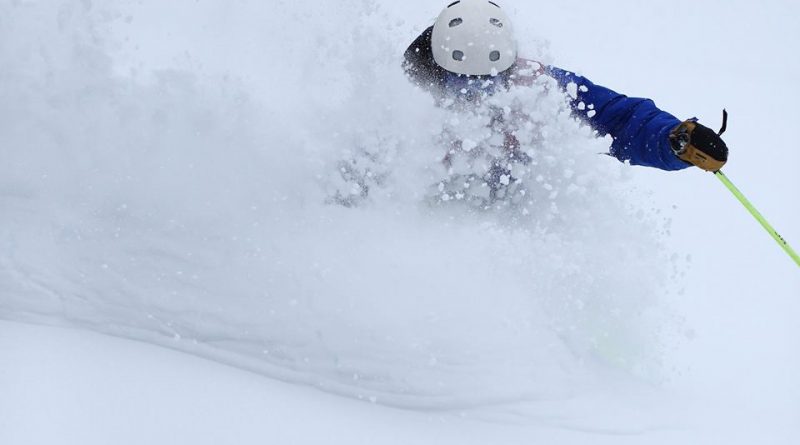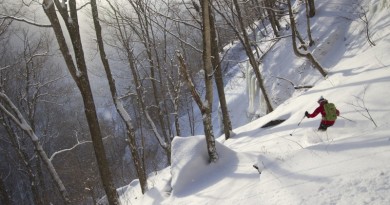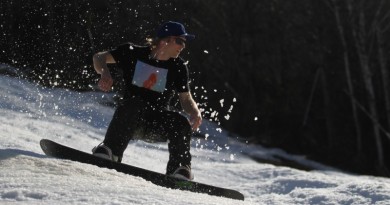How Good Was It?
Compared to last year, we had an incredible winter. But just how good was it, really? We talked to a few weather experts to answer that question, and to see who still has a strong base.
Experts across the board claim that this winter was one of the strongest we have seen in years.
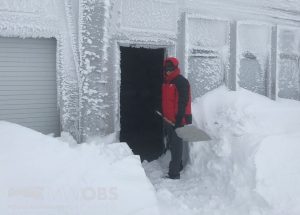
Killington recorded the highest natural snowfall this year since the 2010-11 season, with Stella, this winter’s strongest storm, dropping three feet in total over March 14-15. Killington’s snowfall total is at 248 inches so far, with the mountain expected to close June 1.
David Young, Killington’s snow reporter, was elated to see the return of snow this season. “On the morning of Stella, I went out to my car at 6:00 am and I actually had to dig down to the door handles to open my car door,” he said. “The snow was so light that when I opened the door, it just flooded in and filled the front of my car. I didn’t know if I’d make it to work or not, but I knew it was going to be a good day.”
“A lot of our natural snow trails had a couple of feet, and our snowmaking trails had a foot more,” he added. “Of course we are famous for stockpiling our Superstar trail, and the snow depth at the end of March on Superstar was 25 to 30 feet in some places.” Killington hopes these reserves will bring the season right into June and there is no official closing day set yet.
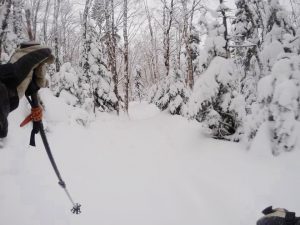
Stowe was on the high end of the snowpack scale. The total snowfall for Stowe as of April 17th, measured at 3,000-feet in elevation, is 375 inches, according to Scott Braaten, Stowe’s weather forecaster. That’s the highest total recorded since the 2000-2001 season.
“In my opinion this was the best winter for Mount Mansfield since at least 2007-08 and likely since 2000-01,” Braaten said. “The two to three week thaw at the end of February and early March is really the only blemish in what was an overall exceptional snow year for the mountain.”
And although other mountains’ snowpacks have greatly decreased, Stowe’s snowpack is holding up strong with a 100-inch depth.
Tim Kelley, New England Cable News meteorologist and a contributor to Jay Peak’s forecasting team saw an equally robust winter at Jay.
“Winter was really good,” Kelley said, adding that Jay Peak has more than 80 inches of snowpack at 3,150 feet as of April 12. Their total snowfall for this season? Close to 500 inches, and that doesn’t include the 30 inches of snow they received in October. By comparison, Alta, Utah measured 521 inches of snowfall for the season, as of April 9.
Sugarbush’s total snowfall came in at 361 inches as of April 14th, according to the mountain’s lead snow reporter, John Atkinson. This total towers over last year’s snowfall of 156 inches, and even the average snowfall: 250 inches.
Although the southern resorts didn’t see as much snow as Stowe or Jay, it was still a great winter for them.
“It really was a winter to remember,” said Cassie Russo, Communications Supervisor at Stratton, “It wasn’t without the occasional ‘thaw’, but what would a New England Winter be without that?”
Stratton’s total snowfall for this winter reached 180 inches, the best season they have had in three years. Last year they only received a total of 50 inches, according to Russo. They even managed to top their 2014-15 season which ended with 156 inches of total snowfall.
“We had multiple monstrous storms adding up to over two feet in some cases, making for some epic powder days,” Russo added.
On Valentine’s Day, Stratton recorded its highest snowpack at 40 inches in depth, and on April 2, they were still at a 33-inch depth.
Mt. Snow’s winter experience was similar.
“This year we ended the season with 182 inches of snowfall,” said Jamie Storrs, Communications Manager at Mt. Snow, “which is 117% of our average annual snowfall.”
The 2015-16 season ended with a mere 51 inches of snowfall. According to Storrs, Mt. Snow ended this season with 360% more snow than last season.
At New Hampshire’s Tuckerman’s Ravine, a popular spot for extreme spring skiing, the snow can last well past Memorial Day. From the nearby Mt. Washington Observatory, Director of Research Eric Kelsey has been keeping an eye on snowfall and temperature shifts on a monthly basis.
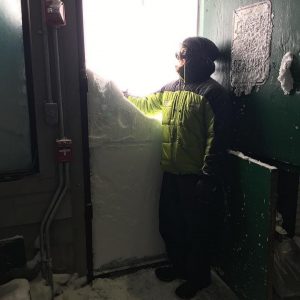
“This winter started strong in December, with slightly colder than average temperatures, and 93.6 inches of snow–over twice our average December snowfall,” he said.
The snow continued to fall throughout the winter, with an average accumulation in January and 73.8 inches in February. According to Kelsey, February was warmer than average by 5.6 degrees, but still maintained a snowpack of 38 inches on the mountain’s summit.
“Perhaps surprisingly, 38 inches is fairly deep for the summit where the strong winds typically blow away most of the snow,” Kelsey said.
March was a lot colder than average, with some days that reached -35 degrees. The winter continues to hold out this spring with 28.5 inches of snow in April already, as of mid-April. Mt. Washington’s total accumulation this season is 349.4 inches so far.
With the strengthening spring sun and recent warm weather, the 38-inch snowpack recorded in February had decreased to 11 inches on Mt. Washington’s summit on April 2.
But the warmer temperatures aren’t all bad– many resorts are still open . It may be shorts season but Vermonters still have spring skiing on their minds.
Featured photo courtesy of Sugarbush Resort, taken on April 2.

